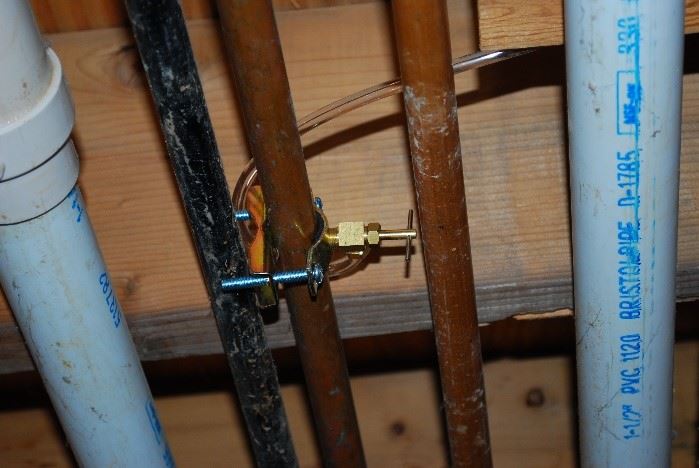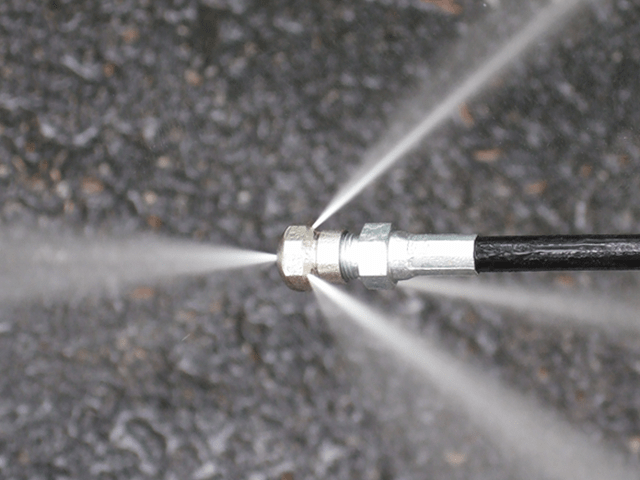Smart Winterizing Solutions: Five Approaches to Protect Your Pipes in Cold Weather
Smart Winterizing Solutions: Five Approaches to Protect Your Pipes in Cold Weather
Blog Article
The publisher is making a number of great points related to Winterizing Your Pipes in general in this article which follows.

All house owners who stay in pleasant environments have to do their best to winterize their pipes. It is something you must do during fall before deep wintertime absolutely starts. Failure to do so can lead to disaster like icy, split, or ruptured pipelines. If the climate outside is frightful, here are some convenient winterizing hacks to maintain your plumbing system secured even.
Try a Hair Dryer or Warm Gun
When your pipes are almost freezing, your dependable hair clothes dryer or heat weapon is a blessing. If the warm towels do not help dislodge any settling ice in your pipes, bowling hot air directly into them might aid. You might finish up harmful your pipelines while trying to melt the ice.
Open Cabinet Doors Hiding Plumbing
When it's cold outside, it would be handy to open closet doors that are camouflaging your pipelines. For example, they could be someplace in your kitchen or bathroom. This will certainly enable the cozy air from your heating system to flow there. Because of this, you stop these revealed pipes from freezing. Doing this small technique can maintain your pipelines warm and also limit the possibly unsafe outcomes of freezing temperatures.
Require Time to Wrap Exposed Piping
One nifty and also simple hack to warm up cold pipelines is to wrap them with warm towels. You can also utilize pre-soaked towels in hot water, simply don't neglect to wear safety handwear covers to guard your hands from the warmth.
Activate the Faucets
When the temperature decreases and it appears as if the cold temperature will certainly last, it will certainly assist to turn on your water both indoors and outdoors. This will maintain the water moving through your plumbing systems. On top of that, the activity will certainly decrease the cold process. Significantly, there's no requirement to transform it on full force. You'll wind up losing gallons of water this way. Instead, go for concerning 5 decreases per minute.
When Pipes are Frozen, shut Off Water
If you discover that your pipes are completely frozen or practically nearing that stage, turn off the main water valve immediately. You will usually find this in your cellar or utility room near the heating system or the front wall closest to the street. Turn it off right now to stop more damages.
With even more water, even more ice will certainly stack up, which will ultimately lead to rupture pipelines. If you are uncertain regarding the state of your pipelines this winter, it is best to call a specialist plumber for an examination.
All property owners who live in temperate environments should do their finest to winterize their pipes. Failure to do so can spell disaster like icy, split, or burst pipes. If the hot towels do not aid displace any kind of clearing up ice in your pipelines, bowling hot air directly right into them might help. Turn off the primary water shutoff quickly if you discover that your pipes are completely icy or practically nearing that phase. With more water, even more ice will pile up, which will ultimately lead to rupture pipes.
PREVENT YOUR PIPES FROM FREEZING THIS WINTER
A Leading Cause of Property Damage
When the weather is taking a deep nose dive into the cold dreary days, the risk of your pipes freezing and potentially bursting skyrockets. Unfortunately, during these cold dreary months, burst pipes are the most common denominator for property damage. The pipes that are most at the risk are those that are in areas where it is most cold in your home. For instance, pipes located in interior places such as basements, attics, and your garage. Unfortunately, that doesn’t mean that the pipes running through your cabinets or exterior walls can’t freeze. Good news, however, is that you can do things to help prevent pipes from freezing.
How to Prevent Pipes From Freezing
Once the temperature starts to drop during the winter, you should be taking the proper measures needed to ensure that your pipes stay warm and that there is circulation of water through them. Some steps that experts may recommend could go against your better judgement when it comes to saving water and heat. However, it would go without saying that when expenses are compared, damaged pipes could put a bigger dent in your wallet than a water bill.
What Can I Do?
Keep your garage door closed. This is very important, especially if you have water supply lines running through your garage. Open your kitchen and bathroom cabinets to allow warm air to circulate through them. Allow air circulation throughout your home. Keeping the interior doors open will once again allow the warm air to circulate inside your home. Ensure your thermostat is running the same temperature throughout the night and day. If you plan to be away from home during the cold months, set your temperature no lower than 55° F. This should provide enough heat to keep the pipes warm and prevent any remaining water inside the pipes from freezing. For more of a long-term solution, add insulation to attics, basement, and other crawl spaces around your home. By allowing your faucet to drip, it will alleviate pressure in the system. This is important because the pressure that is created between the blockage and the faucet can potentially cause the pipes to burst. Allowing the faucet to drip will prevent the pressure from building up, therefore keeping the pipes from bursting. Seal any cracks, openings, and crawl spaces around your home to prevent cold air from coming inside. This keeps your pipes-not to mention your home-warmer and less susceptible to issues caused by freezing temperatures. For the pipes in your home that are easily accessible, applying electrical tape to them might prevent them from freezing over. This is a quick fix, as you can apply the tape directly to the pipe. There are two options for heating tapes. One turns on and off by itself when it senses heat is needed. The other type of heating tape needs to be applied when heat is needed and removed when not necessary. If you have exposed pipes in your home, you can check this website to take a look at a few options that would be available at a shop near you.

I stumbled upon that article on How to Prevent Frozen Pipes while browsing on the search engines. Do you know about another individual who is fascinated about the topic? Feel free to share it. Thanks so much for going through it.
Immediate attention? Phone us! Report this page